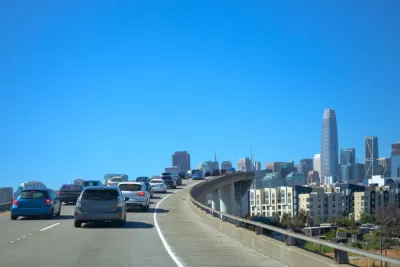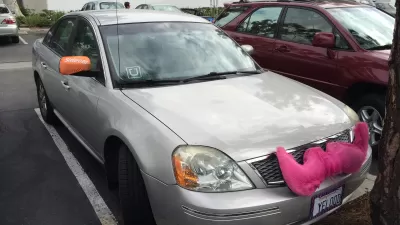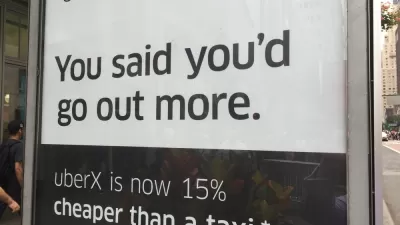A pair of new studies add to an emerging scientific model of the effect of transportation network companies like Uber and Lyft. The complication: One study reinforces earlier findings, and the other contradicts.

A new study by the San Francisco County Transportation Authority takes inventory of San Francisco's traffic volumes, specifically as the first study of the effect of transportation network companies (also referred to as ride-hailing companies) in the city.
"The gist is that while ride-hailing companies have contributed to the increase in traffic congestion in San Francisco, jobs and population growth also play a major role," according to an article by Megan Rose Dickey sharing the findings of the analysis.
That might be a charitable portrayal, however, of the effect of transportation network companies. The figures for the impact of transportation network companies between 2010 and 2016, as reported by Dickey:
- 51 percent of the increase in daily vehicle hours of delay
- 47 percent of the increase in vehicle miles traveled
- 55 percent of the average speed decline
- 25 percent of total vehicle congestion citywide
That's more than a significant impact on traffic, and one that reflects the findings of an earlier study in Seattle.
Another recently released study, however, complicates the picture of Uber-and-Lyft-driven congestion. A study published recently in the Journal of Urban Economics finds that Uber has increased the use of public transit by as much as five percent, with results varying by the size of the metropolitan area. Those findings directly contradict earlier studies that found evidence of transportation network companies cannibalizing rides from public transit agencies.
FULL STORY: Uber and Lyft are responsible for about half of SF’s rise in traffic since 2010, SFCTA says

Rethinking Redlining
For decades we have blamed 100-year-old maps for the patterns of spatial racial inequity that persist in American cities today. An esteemed researcher says: we’ve got it all wrong.

Planetizen Federal Action Tracker
A weekly monitor of how Trump’s orders and actions are impacting planners and planning in America.

California High-Speed Rail's Plan to Right Itself
The railroad's new CEO thinks he can get the project back on track. The stars will need to align this summer.

Santa Clara County Dedicates Over $28M to Affordable Housing
The county is funding over 600 new affordable housing units via revenue from a 2016 bond measure.

Why a Failed ‘Smart City’ Is Still Relevant
A Google-backed proposal to turn an underused section of Toronto waterfront into a tech hub holds relevant lessons about privacy and data.

When Sears Pioneered Modular Housing
Kit homes sold in catalogs like Sears and Montgomery Ward made homeownership affordable for midcentury Americans.
Urban Design for Planners 1: Software Tools
This six-course series explores essential urban design concepts using open source software and equips planners with the tools they need to participate fully in the urban design process.
Planning for Universal Design
Learn the tools for implementing Universal Design in planning regulations.
City of Camden Redevelopment Agency
City of Astoria
Transportation Research & Education Center (TREC) at Portland State University
Regional Transportation Commission of Southern Nevada
Toledo-Lucas County Plan Commissions





























